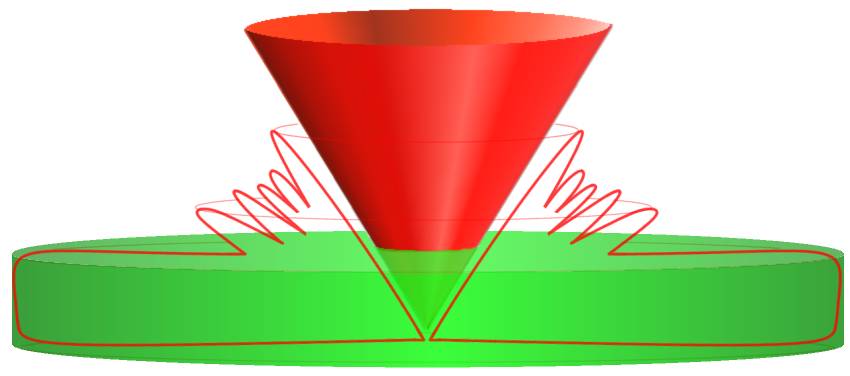Cone of Silence

Figure 1: Cone of silence over the radar site
Cone of Silence
In an air traffic control radar, targets lie in a thin flat cylinder whose radius is many times its height. A radar is not designed to detect aircraft directly above the radar antenna. This gap is known as the cone of silence.
This gap or cone of silence is the inverted cone mapped out by the rotating antenna as a result of the antenna back angle being less than 90 degrees. Hence, the back angle is an important antenna parameter. If the back angle is shallow then aircraft will fall outside radar cover as they over-fly the radar site. By most radars the actual radius of the cone of silence is the double of the targets height. This means, a target in a height of 10,000 feet (or 3,000 m) enters the cone of silence in a range of 3¼ NM (6,000 m).
Aircraft flying in radar's cone of silence may, however, be detected by another, or several other radar sites a hundred or so miles away due to their overlapping coverage.

